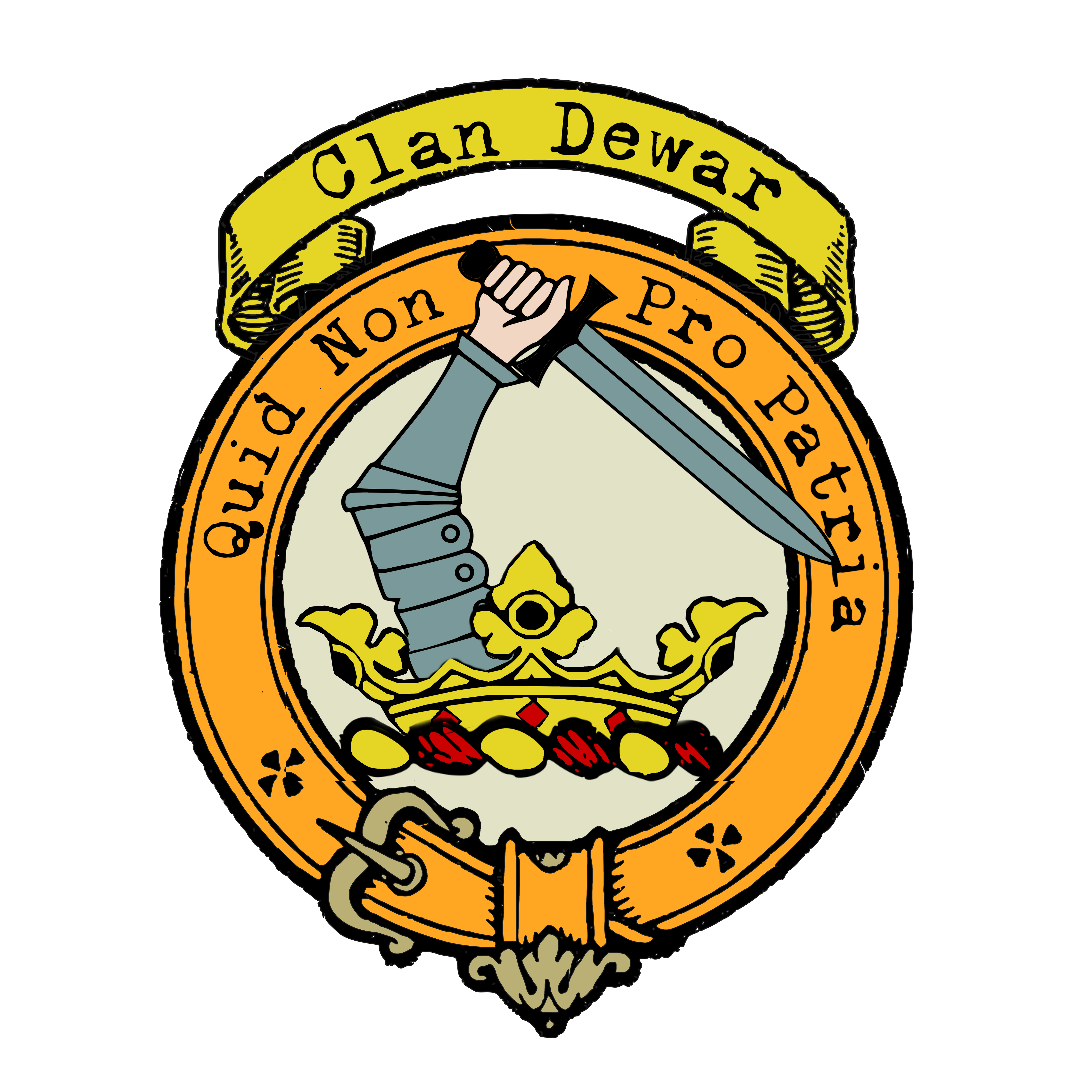Dewar Clan
|
|
CREST: Issuant from a crest coronet Or of four strawberry leaves, a dexter arm vambraced, brandishing a sword Proper, hilted and pommelled Or MOTTO: Quid non pro Patria TRANSLATION: Why would we not do it for our Country? VARIATIONS: N/A |
| The Scottish Clan Dewar has a long and storied history that spans centuries and is steeped in tradition and culture. The clan is associated with several areas in Scotland, including the lands of Dewar near Heriot in the southeast of Edinburgh, the Royal Burgh of Stirling, and Cambuskenneth.
The origins of the Dewar family are uncertain, but a legend exists of a Dewar who killed a savage wolf and was rewarded with land. The earliest historical reference to the Dewar family dates back to the 13th century, when Thomas and Piers de Deware of Edinburghshire swore fealty to Edward I of England in 1296. Over the centuries, the Dewar family grew in prominence and were styled ‘of that Ilk’ in various charters in the sixteenth and seventeenth centuries. They owned the lands of Dewar near Heriot, which were later sold, and the family moved to nearby Carrington. The present chiefs of the Dewar family are descended from this branch. The Dewar family also had connections to the Royal Burgh of Stirling and Cambuskenneth, where a distinct branch of the family called Dewar of Ambuskenneth existed in the seventeenth century. John Dewar, elder son of Patrick Dewar of Cambuskenneth, was fined for causing ‘blood and riot’ in 1710. The Dewar family’s contribution to the whisky industry is significant, and they are known for their Dewar’s blended Scotch whisky, which is popular worldwide. John Dewar, who was born in 1856, transformed the family’s whisky business into a major Scottish company through his drive and acumen. He was later created Baron Forteviot of Dupplin Castle, and the title remains in the family, which is still closely connected to the whisky industry. The Dewar family’s connections to important relics of the early Celtic church are also noteworthy. The Dwar Coigerachs, who were custodians of the staff of St Fillan, a Celtic saint and abbot believed to be of royal blood, were a distinguished branch of the Dewar family. The staff of St Fillan was an important relic, and Robert the Bruce was impressed by the many stories of miracles worked by the presence of the saint’s relics. The valuable relic was held by the family until the late seventeenth century when it was sold, but they later regained possession of it. In the nineteenth century, they immigrated to Canada, taking the saint’s relic with them. It was later returned to the Society of Antiquaries of Scotland. The Dewar family has had many notable members throughout history, including Donald Campbell Dewar, a prominent Scottish politician and Member of Parliament for Garscadden in Glasgow since 1978. The present chief of the Dewar family and his heir both served as professional soldiers, each attaining command of their respective regiment. Peter de Vere Beucherk Dewar is also a member of the Royal Company of Archers and has served as Falkland Pursuivant Extra-Ordinary on many occasions. The Scottish Clan Dewar is a fascinating and influential family with a rich history that spans several centuries. Their contributions to Scottish society and culture are significant, and their legacy continues to be felt in various areas, including the whisky industry and their connections to important relics of the early Celtic church. |
|
Citations:
|
|

 Purchase @ Redbubble
Purchase @ Redbubble
Purchase @ Amazon.com
Purchase @ Amazon.co.uk
